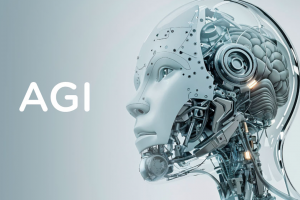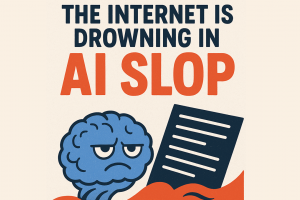How close are we to building a machine that thinks like a human? In this post, we dive deep into expert predictions for AGI timelines, the monumental technical and ethical barriers in the way, and what those breakthroughs might look like. Whether AGI arrives in 2030 or 2050, this journey reshapes how we live, work, and dream. Let’s explore together—and discuss where you think we’ll really land.
“We are on the cusp of something bigger than the steam engine, bigger than the printing press, bigger than the internet.”
Imagine waking up one day, and the AI assistant on your phone—not just smart, but genuine in thought—suggests a novel scientific theory, debates philosophy, invents new devices, or even argues politics with you. That’s the promise of Artificial General Intelligence (AGI)—an AI that can understand, learn, reason, and adapt across domains like a human mind. But when (if ever) will it arrive? And what stands in the way?
In this post, we’ll journey deep into the predictions of top experts, the fundamental challenges that make AGI a formidable frontier, and the dramatic implications for all of us. Don’t just read—engage. I want your take: when do you believe AGI will emerge?
1. What Exactly Is AGI—and Why It’s So Elusive
Before we ask when, let’s clarify what.
-
Narrow AI vs. AGI
Today’s AI systems—from GPT to self-driving cars—are extremely powerful but narrow: they excel in specific tasks (language, image, game playing) but fail outside their training domain. AGI means learning and reasoning across contexts, bridging domains, and doing new things never seen before. -
What does “general intelligence” entail?
It means adaptability, common sense, abstraction, transfer learning, reasoning under uncertainty, self-reflection, and more. It’s not just scaling up models—it’s architectural breakthroughs. -
The alignment problem & control challenge
Giving machines the ability to act generally means you must ensure they act according to human-aligned values. Ensuring safe, controllable, aligned AGI is a whole domain of research on its own.
In short: AGI is not “bigger GPT.” It’s a qualitatively different level that demands conceptual breakthroughs in architecture, reasoning, safety, and efficiency.
2. Expert Predictions: When (If Ever) Will We See AGI?
There’s no consensus—but the spectrum is fascinating.
📅 Survey & trend data
-
In an AI researcher survey (2017), 352 experts estimated a 50% chance of AGI by 2060, with many placing it between 2040 and 2050.
-
More recently, forecasters (such as Metaculus) see a 25% chance by 2027, and 50% by 2031.
-
Others are more conservative: superforecasters in 2022 offered a median 2048 for AGI (based on certain definitions)
-
Some reports now suggest the “bottlenecks” in AI scaling might occur around 2030, hinting that we might reach AGI—or see a plateau—by then.
🧠 Expert voices and industry leaders
-
Demis Hassabis (DeepMind CEO) and Sergey Brin (Google cofounder) see ~2030 as a plausible window for AGI.
-
Nvidia’s CEO Jensen Huang predicts we could see AI systems "pass human tests" within ~5 years (depending on how you define the test)
-
Sam Altman (OpenAI) has made bold statements like “we know how to build AGI” and suggests AI agents may soon materially shift company outputs.
-
However, caution prevails: many experts argue predictions cluster so broadly because definitions vary, and there are deep unknowns.
📉 Shifting timelines over time
Interestingly, projections are trending shorter. As AI milestones accumulate faster, some timelines that were once set 50+ years ahead are being ratcheted earlier.
But don’t be misled: “earlier” doesn’t mean “next month.” The variance is huge.
3. Why AGI Is So Hard: The Core Barriers
AGI is a high-stakes puzzle. Let’s break down the major obstacles.
1. Computational & energy constraints
-
AGI-scale models would need astronomical compute, memory, and energy—far beyond today’s limits. Training costs are skyrocketing; the compute required doubles with every new architecture—this trend is intensely unsustainable.
-
Power and cooling infrastructure, chip fabrication limits, and global energy constraints all factor in.
2. Architectural & algorithmic leaps needed
-
Current deep learning methods (transformers, CNNs) are powerful—but they struggle at generalization, abstraction, reasoning over time, and non-statistical inference.
-
We lack a unified architecture that stitches together modules like memory, planning, symbolic reasoning, commonsense, self-reflection, and perception in a coordinated system.
-
The Leap from Narrow → General is nontrivial: mere scaling won’t unlock true AGI without conceptual breakthroughs.
-
The Energy Wall, Alignment, and Systems Integration are often seen as the three “grand challenges” in AGI design.
3. Data, generalization, and transfer learning
-
Real human intelligence thrives on transfer: applying past knowledge to novel domains. AI often fails when moved beyond its training distribution. Common sense, implicit causal reasoning, and intuitive world knowledge are extremely hard to encode. AI systems still struggle with simple “common sense” reasoning.
-
Overfitting, brittleness, and adversarial failures remain real problems.
4. Alignment, ethics & safety
-
Even if we build AGI, ensuring it behaves safely (the Control Problem) is one of the hardest technical challenges.
-
Defining human values precisely in code is deeply ambiguous and contested—how do you teach an AGI your moral subtlety?
-
AGI may self-modify; ensuring that self-modifications remain aligned is nontrivial.
-
Governance, regulation, legal, and international frameworks lag far behind.
-
There’s also the risk of malicious use, concentration of power, surveillance, weaponization, and existential risk.
5. Economic & institutional constraints
-
AGI research is expensive and dominated by large institutions. Smaller labs and diverse perspectives are often marginalized.
-
Funding incentives often favor incremental, narrow-AI advances over riskier, fundamental breakthroughs.
-
Collaboration, openness, and sharing of breakthroughs may face intellectual property, security, or nationalistic constraints.
6. Uncertainty, definitions, and epistemic risk
-
We still lack a universally accepted theory of intelligence. What exactly qualifies as “general intelligence”?
-
Because of that, we debate whether our milestones count or not, making forecasting slippery.
-
There’s risk that researchers overshoot, get misaligned, or misinterpret progress.
4. What Needs to Break Through—and What Could Tip the Scales
For AGI to go from dream to reality, several breakthroughs seem essential:
-
New architectural paradigms
Something beyond pure neural nets—hybrid models integrating symbolic, probabilistic, memory, reasoning, and reinforcement learning in balanced systems. -
Efficient scaling & compute innovation
Quantum computing, neuromorphic chips, optical computing, and algorithmic compression breakthroughs could drastically reduce the energy/computation barrier. -
Robust transfer / meta-learning
Models that can truly generalize, adapt, self-modify, and learn across domains. -
Transparent alignment & corrigibility
Systems we can audit, understand, intervene on, and correct on the fly without causing errors. -
Global governance + ethical frameworks
International collaboration, policy, auditing, and regulation must catch up to govern AGI development responsibly. -
Benchmarking & evaluation
We need better tests of “general intelligence” to track progress (not just narrow benchmarks). Some new datasets (e.g. “impossible test” for acknowledging uncertainty) are steps forward. -
Safety and fail-safe methods
Fail-safe shutdowns, containment, and continuous verification under real-world conditions.
If even one of these remains unsolved, AGI could be delayed by decades—or remain perpetually just out of reach.
5. Possible Scenarios: What the Future Might Look Like
Let me paint a few scenarios to stretch your imagination—and your thinking.
𝐒𝐜𝐞𝐧𝐚𝐫𝐢𝐨 1: AGI by ~2030
Breakthroughs in architecture, compute, and alignment converge. Many narrow-AI systems act as stepping stones; within a decade, we see emergent AGI systems. This is the optimistic timeline many insiders now entertain.
𝐒𝐜𝐞𝐧𝐚𝐫𝐢𝐨 2: Mid-century AGI (2040s–2050s)
Progress continues, but bottlenecks in energy, scaling, safety slow the leap. AGI may arrive mid-century—still transformational, but not tomorrow.
𝐒𝐜𝐞𝐧𝐚𝐫𝐢𝐨 3: No AGI—or permanent plateau
We hit insurmountable constraints in alignment, unpredictability, or architectural ceilings. AI remains narrow and extremely powerful, but never truly “general.”
𝐒𝐜𝐞𝐧𝐚𝐫𝐢𝐨 4: Staged AGI
Rather than a sudden jump, AGI emerges gradually in domain-by-domain form (e.g. scientific AGI, creative AGI). The line between “narrow” and “general” blurs over decades.
𝐒𝐜𝐞𝐧𝐚𝐫𝐢𝐨 5: Recursive self-improvement & takeover
If an AGI can improve itself, it could rapidly accelerate to superintelligence (ASI). That’s the traditional “singularity” scenario—full of both promise and peril.
6. Why This Matters to You
-
Your career & future: AGI could automate, augment, or transform many professions. Understanding its trajectory helps you stay relevant.
-
Governance, fairness & equity: Who owns AGI? Who controls it? These questions shape power and justice in our society.
-
Existential stakes: If misaligned, AGI could pose existential risk. If aligned, it could help us solve climate, disease, resource scarcity, and more.
-
Mindset shift: Even talking about AGI expands how we think about intelligence, creativity, value, and purpose.
7. Let’s Talk: I Want to Hear From You
-
When do you believe AGI will arrive—or will it never arrive?
-
Which obstacle (compute, architecture, alignment, data, ethics…) seems hardest to you?
-
If AGI emerges, do you feel optimistic—or fearful?
-
Tag someone who loves sci-fi, philosophy or tech. Let’s catalyze a big conversation.


















